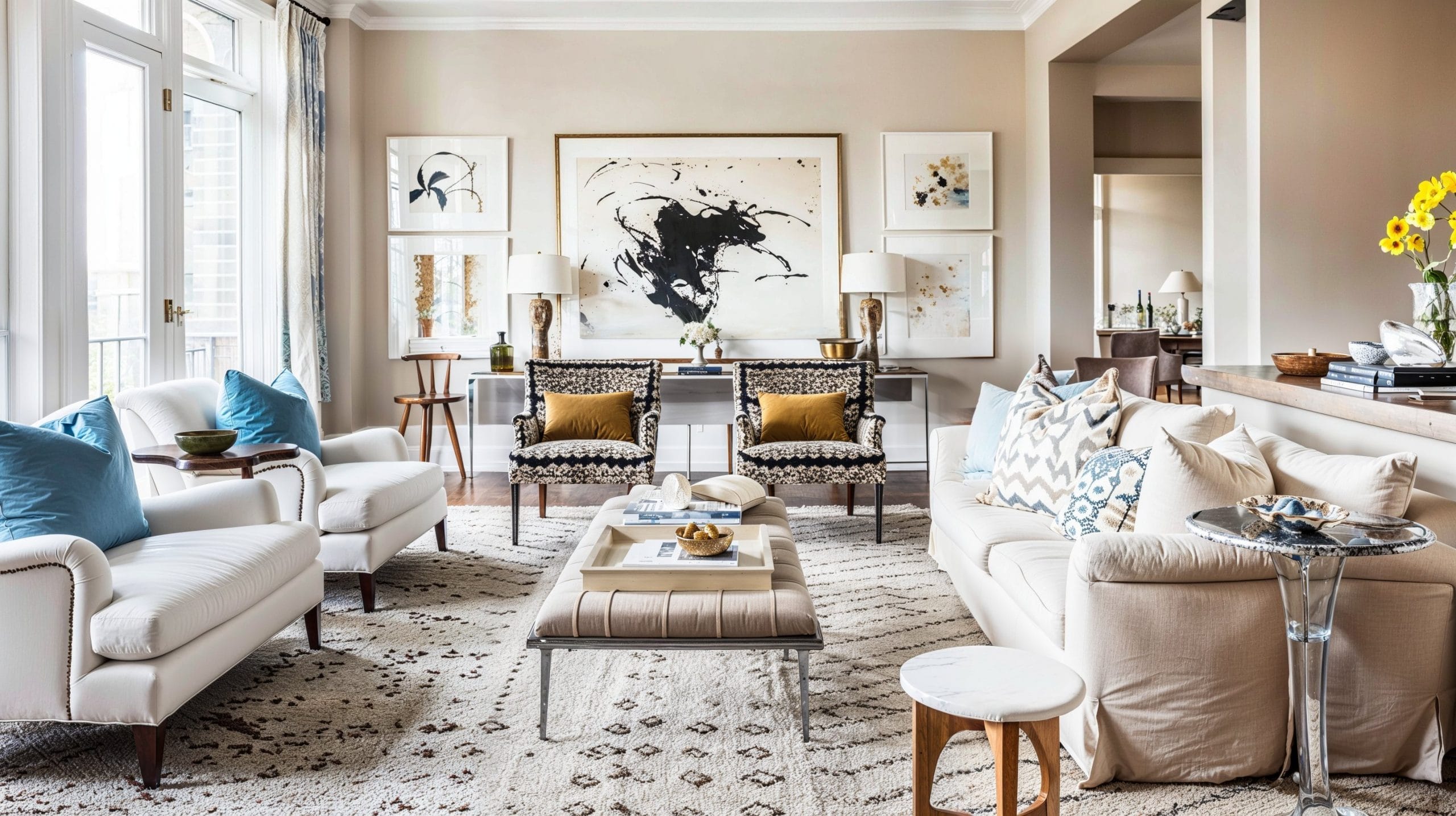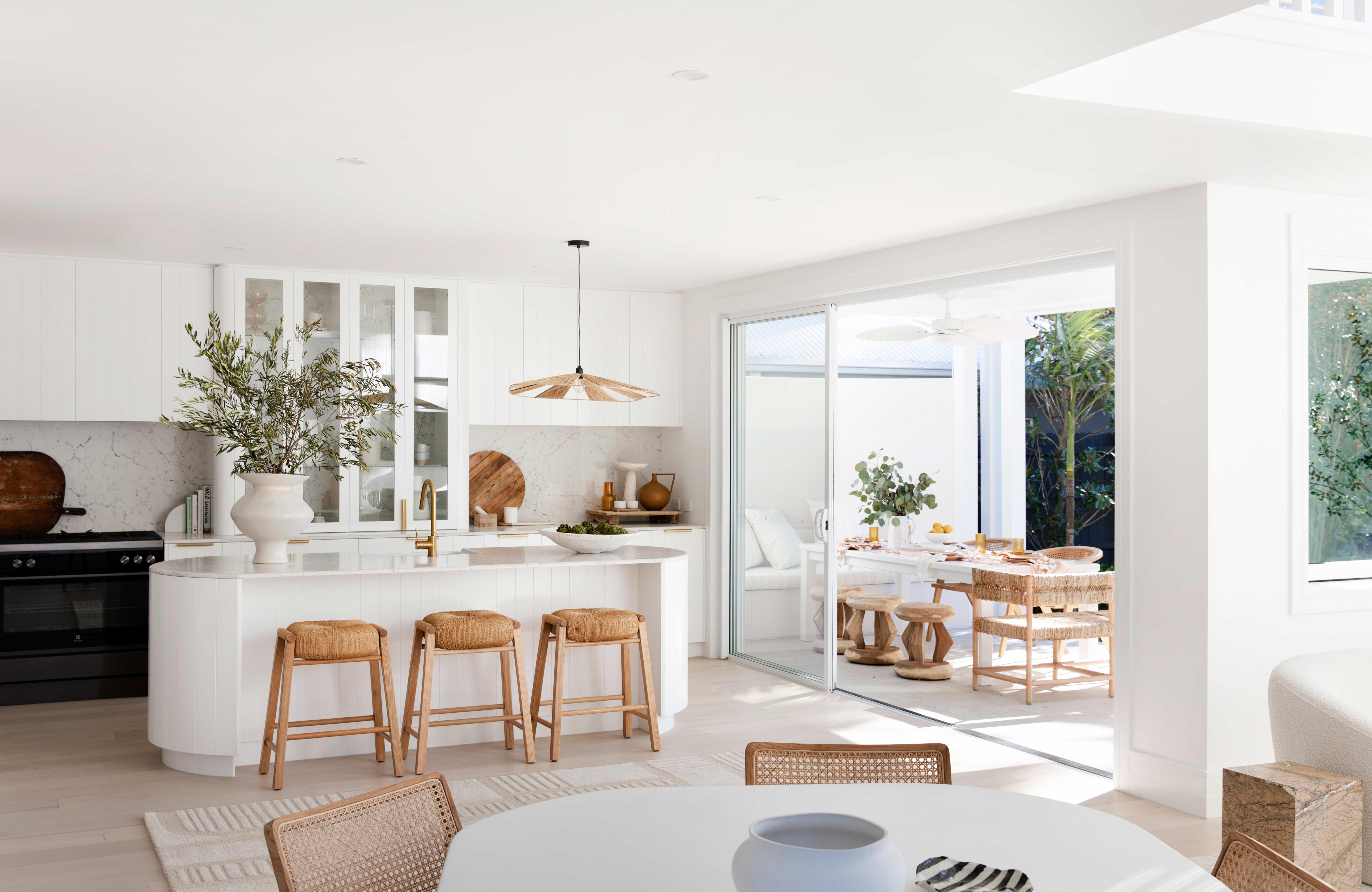Work with professionals in luxury interior design to craft a beautiful space.
Work with professionals in luxury interior design to craft a beautiful space.
Blog Article
Transform Your Home With Vital Concepts of Inside Design and Looks
The art of changing your home via the essential principles of interior decoration and looks calls for a thoughtful strategy that integrates shade, equilibrium, and spatial recognition. By understanding the impact of color theory and the significance of texture and patterns, one can create spaces that are not just visually attractive but also deeply individual. Attaining this balance includes even more than simple design; it includes a calculated plan and a keen understanding of how each element interacts within a room. As we check out these foundational concepts, think about exactly how they may redefine your understanding of home and personal expression.
Understanding Shade Theory
Understanding the concepts of shade theory allows developers to develop spaces that resonate psychologically with residents while satisfying useful requirements. Each classification plays a critical role in developing consistency within a room.
The psychological effect of shades is profound; warm tones such as reds and oranges stimulate energy and warmth, while great tones like blues and eco-friendlies advertise calmness and tranquility. Additionally, the usage of corresponding shades enhances visual rate of interest, developing striking contrasts that can boost an area's allure.
Neutral colors, on the other hand, function as a flexible backdrop, enabling various other layout components to beam. It is vital to consider elements such as lighting and the room's function when selecting a color palette, as these can modify the assumption of shades throughout the day.
Inevitably, a well-considered shade system can change an area, fostering a sense of comfort and style that aligns with the inhabitants' preferences. Proficiency of shade theory is, as a result, a crucial ability for any type of interior developer intending to produce harmonious and inviting settings.
Accomplishing Balance in Design
Just how can developers attain a sense of balance in their spaces? Attaining balance in design is basic to producing unified interiors. Designers can make use of three primary kinds of equilibrium: symmetrical, unbalanced, and radial. In proportion equilibrium includes setting up elements equally around a central point, cultivating a sense of order and serenity. This type frequently includes pairs of furnishings or artwork, enhancing aesthetic stability.
Unbalanced balance, on the various other hand, depends on varying elements that still attain a natural appearance. This approach enables more vibrant and informal plans, providing passion while maintaining stability. By thoroughly picking varying dimensions, shades, and textures, developers can develop a visually engaging room that feels well balanced yet energised.
Radial balance highlights a main centerpiece with aspects radiating external. This design is typically seen in round formats, where furnishings and design create a cohesive border that draws the eye inward.
Eventually, achieving balance requires thoughtful consideration of range, proportion, and the partnerships between aspects. luxury interior design. By skillfully applying these balance principles, developers can transform spaces into atmospheres that feel both visually click now pleasing and functionally unified, boosting the overall experience for occupants
Significance of Spatial Understanding

An eager feeling of spatial awareness enables developers to determine prime focus within an area, leading the viewer's interest to crucial attributes while maintaining an overall feeling of unity. It also aids in the calculated positioning of lights, which can drastically affect the understanding of area and mood. Moreover, recognizing spatial partnerships makes it possible for the developer to accommodate the certain requirements of residents, making sure that each location serves its desired function without compromising looks.
Ultimately, spatial awareness is critical for maximizing the potential of any kind of indoor space. By carefully taking into consideration the interplay in between dimensions, design, and function, developers can produce environments that not just meet practical requirements but additionally evoke a feeling of comfort and beauty, improving the total living experience.
Incorporating Appearance and Patterns
Embracing a varied variety of appearances and patterns can substantially enhance the aesthetic and tactile charm of an indoor area. The strategic usage of different products-- such as wood, steel, fabric, and stone-- develops depth and passion, making a space really feel much more welcoming and vibrant. Integrating smooth surface areas with rough appearances can develop a balance that draws the eye and involves the detects.
When incorporating patterns, take into consideration both range and rep. Large patterns can act as prime focus, while smaller, subtle layouts can complement other aspects without frustrating the space. Layering patterns, such as pairing floral you could try this out pillows with candy striped throws, adds complexity and a feeling of consistency if implemented thoughtfully.
It is additionally crucial to maintain a natural shade combination, making certain that textures and patterns collaborate rather than complete for focus. By choosing a few essential textures and patterns, you can develop a merged aesthetic that shows your personal design while improving the total ambiance of the room. Ultimately, the cautious unification of these aspects can change a mundane area into an innovative setting abundant with personality and warmth.
Personalizing Your Room
Producing a space that shows your individuality is vital to attaining a genuinely inviting atmosphere. Personalization in interior layout allows you to infuse your distinct design and passions into your home, transforming it from a simple shelter into a shelter that talks with who you are. Begin by choosing a shade palette that resonates with your emotions-- vibrant tones can stimulate, while soft tones provide serenity.
Incorporate art work and decoration that show your interests, whether it be travel, nature, or abstract principles. Showing individual collections, such as publications, pictures, or keepsakes, can evoke valued memories and develop centerpieces within a room. In addition, think about tailoring practical items, like upholstered furniture, to align with your aesthetic preferences.

Final Thought
Finally, the improvement of a home with the important principles of interior design and appearance necessitates a detailed understanding of shade concept, balance, spatial recognition, appearance, and personalization. Each component contributes considerably to producing a harmonious and functional living setting - interior design firms. By thoughtfully incorporating these concepts, individuals can improve the visual allure and emotional resonance of their rooms, ultimately fostering a home that reflects one-of-a-kind identities while supplying comfort and practicality
Report this page